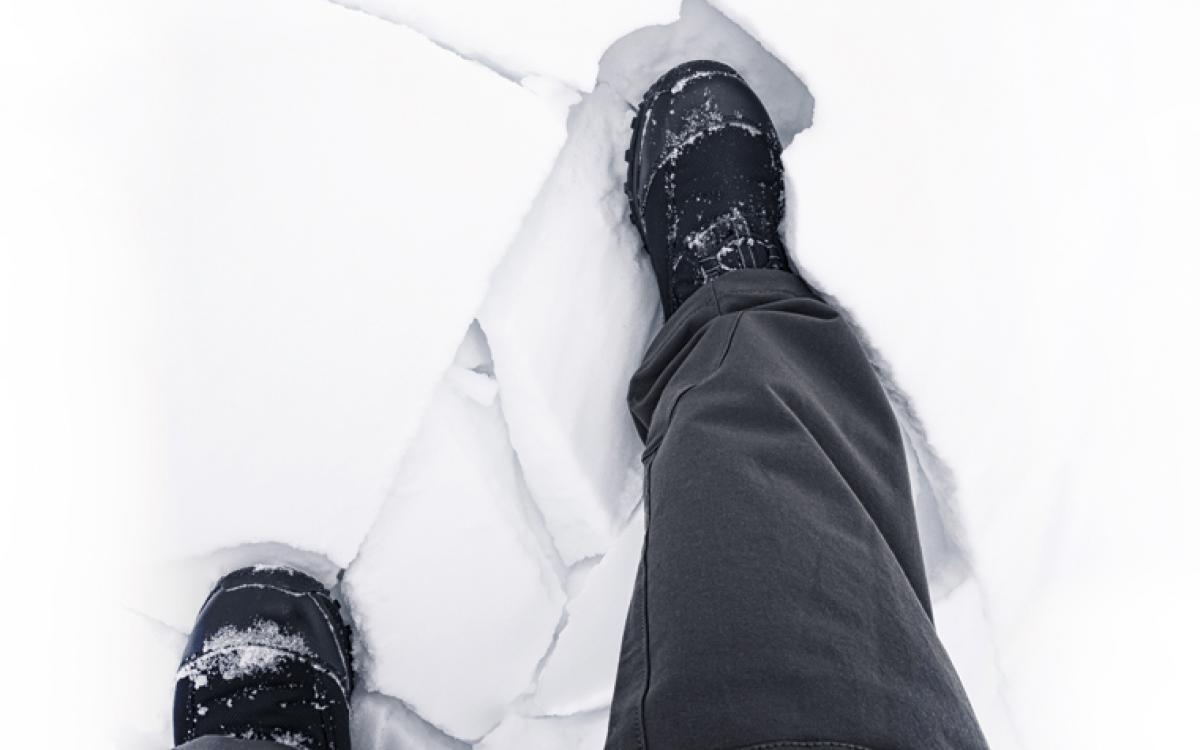Snowmobilers armed with cordless drills head out on the lakes around Yellowknife near the end of October to measure the thickness of the ice. According to Bruce Hewlko, president of the Great Slave Snowmobile Association, they park and creep out timidly on foot. “We’ll take a couple steps out onto the ice and if it doesn’t crack, and if we think we’re in deep enough water, then we’ll drill a small hole and test that thickness.” Two inches (five centimetres) is the low end of what’s marginally safe to walk on. Listen very carefully for cracking at this thickness. Four inches is fine to walk on. Five to six inches is safe to snowmobile on, depending on the quality of the ice—clear ice is good, cloudy ice is weaker. Eight to 12 inches is fine for a car or small truck.
Hewlko uses a 1.5-inch wood bit in the drill, with extensions, and measures the ice with a stick, marked off in inches, that has a hook in the end for finding the bottom of the ice. If that’s not rugged enough for you, the local houseboaters, whose homes sit atop the ice, head out with axes and tape measures, holding hockey sticks parallel to the ground to catch them if they fall through.










